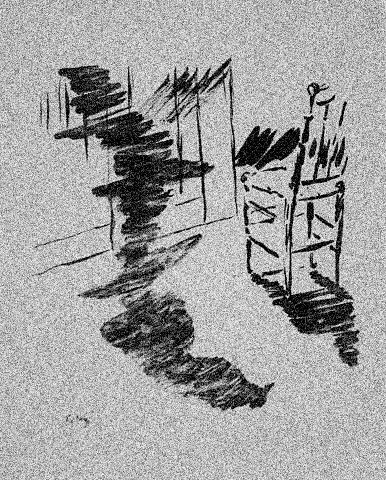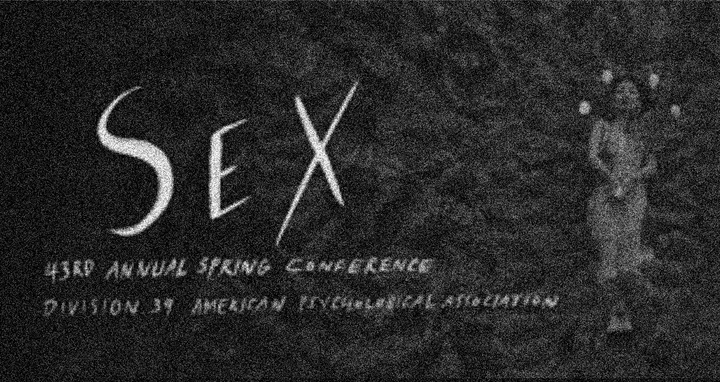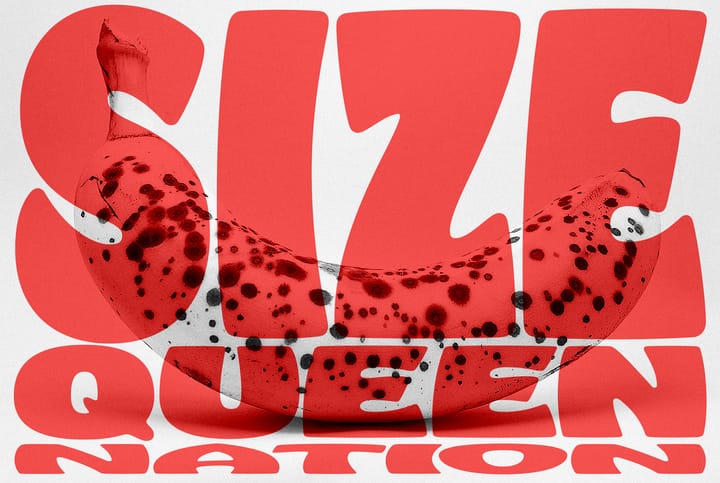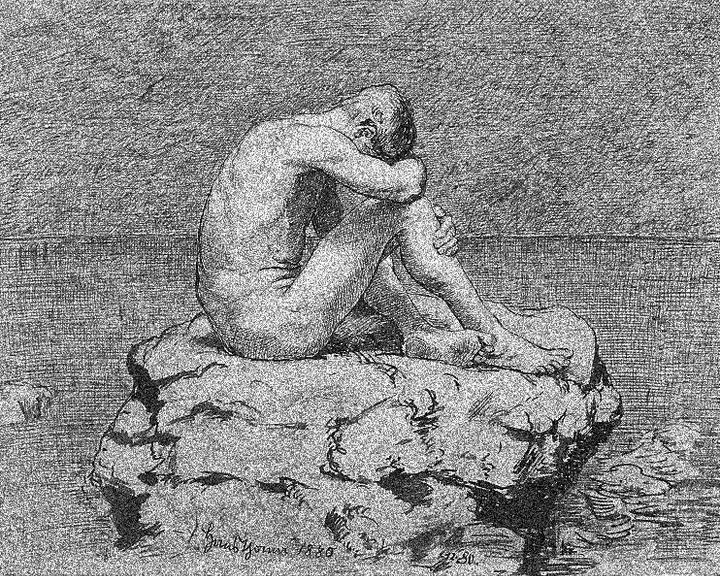The Return of the Lonely Crowd
How David Riesman's theory of traditional, inner, and other-directed character types helps explain the new range of psychological symptoms hobbling today’s young people.

If the recent coverage of adolescent psychological health in major newspapers is any indication, our society has produced a generation of children who are deeply depressed, overwhelmed with anxiety, and suicidal. They are also having less sex, and when they do, they are purportedly not enjoying it. While coverage of these trends is increasing, there is often a failure to make the connection between changes in sexuality and other expressions of negative psychological phenomena.
A recent New York Times article even goes so far as to suggest this is something of a positive trade-off:
In 2017, 31 percent of students surveyed said they had [persistent feelings of hopelessness], while 28 percent said so in 2007. In 2017, nearly 14 percent of students had actually made a suicide plan, up from 11 percent in 2007…. The report did offer some encouraging trends, suggesting that the overall picture for adolescents is a nuanced one. Compared to a decade ago, fewer students reported having had sex, drinking alcohol or using drugs like cocaine, heroin or marijuana.
The moralizing here is of course absurd—“Sure, young people are more suicidal, depressed, and anxious, but at least they aren’t doing drugs or having sex”—but the real failure is the foreclosure of any connection between adolescent maladaptation and underlying character structure.
The Return of the Lonely Crowd, and a New Psychological Radar
In his 1950 sociological study The Lonely Crowd, David Riesman categorizes the historical progression of social character into three sequential phases: tradition-directed, inner-directed, and other-directed. He acknowledges that character development is a complex, overdetermined process, but nevertheless ascribes a causal relationship to population dynamics and character development. In “high growth potential” societies characterized by high birth and death rates, a tradition-directed character prevails. Strict observation of social norms is needed to ensure continuity in the face of starvation, plagues and other calamities. In “transitional growth” societies, the declining death rate allows rapid expansion and development. Here an inner-directed character forms, since tradition is no longer sufficient for navigating such a rapidly-changing social environment. In the current era, one of “incipient population decline” (characterized by a low birth rate and low death rate), Riesman observes the emergence of a new type of character he terms other-directed. Although the causal relationship between demography and character is almost certainly not so straightforward, Riesman’s characterological descriptions continue to resonate with everyday experience.
Riesman employs a metaphor to distinguish the psychological comportment of the inner-directed character from the other-directed. Inner-directed types function along the lines of a “gyroscope,” which provides a strong center of fixed ideals instilled by parents and other authorities. These convictions keep the inner-directed person “on course,” even as the strong ties of traditional society are swept asunder. In the other-directed society of late capitalism, one must find one’s place in a much more nebulous situation. Unlike the inner-directed character, the most important inputs of the other-directed types come from without. The metaphor Riesman employs for this character type is the psychological “radar,” which must constantly detect and process the symbolic actions of others. Success requires the ability to continually monitor subtle and ever-changing social signals to better adapt to the demands of a social world dictated by the needs of concentrated capital. Increased bureaucratization is coupled with the need to “get and hold” one’s place in a corporate structure. “What can be internalized, then, is not a code of behavior but the elaborate equipment needed to attend to [cultural] messages and occasionally to participate in their circulation. While guilt and shame, the primary controls of inner-directed society, never go away, a new psychological force—diffuse anxiety, comes to predominate.”
Childhood and child-rearing
The way children and adults relate prefigures the way individuals relate to society, and the social and economic changes that underpin the transition from inner- to other-directed character are buttressed by changes in child-rearing practices. “One might summarize the historical sequence by saying that the tradition-directed child propitiates his parents; the inner-directed child fights or succumbs to them; the other-directed child manipulates them and is in turn manipulated.” In a tradition-directed culture, the high death rate necessitates the reproduction of strict social order. The primary goal of parents is to train children to take their place in society. In an inner-directed culture, rapid expansion beyond the boundaries of tradition requires children to internalize a normative schema that both grounds them in traditional morality and enables them to operate in radically new circumstances. Riesman’s description of inner-directed family life clearly echoes the oedipal struggle, but he implies this dynamic changes significantly in postwar society. In other-directed society, a low birth rate leads parents to apply more time, labor and attention to each child.
But this constant, heightened, hovering attention generates anxiety for both the parents and the child. Parents, who themselves look to external cultural signals for guidance, become ever more insecure about the proper modes of child-rearing. The culture industry capitalizes on this sense of insecurity, inundating parents with advice and individualizing the difficulties experienced in childcare. Parents are taught that “If the children are cross then the mother must be withholding something. And while [mass media] also tell the mother to ‘relax’ and to ‘enjoy her children,’ even this becomes an additional injunction to be anxiously followed.” Parents feel particularly anxious about feelings of hatred towards their children; without room for “normal hatred,” “keeping up with the Joneses” becomes a compulsion to “keep up with the Brady Bunch.”
Riesman illustrates the postwar transition in child-rearing with the 1944 film The Curse of the Cat People, wherein a young girl Amy “lives in a suburban, middle-class home with its typical neatness, garden, and Negro servant. […] There is a terrific pressure of adult emotion focused around this one child from the parents and servant.” Amy, who is imaginative and prone to daydreaming, believes her father’s joke that the tree in her front yard is actually a mailbox. When the letters she writes are never mailed, her father chastises her for believing him. In her loneliness she discovers an imaginary friend, but is severely punished for this fantasy. “The parents insist that the child somehow know, without a formal etiquette, when things are supposed to be ‘real’ and when ‘pretend.’”
In other-directed society, a child’s life (both inner and outer) is extensively policed. Parents are not just bothered by their children’s friends, but by certain thoughts they don’t want their children to have. The traditional or inner-directed child is capable of having a “moral compass,” but societal forces press much harder on the other-directed child. “In the population phase of transitional growth [parents] can point to self-evident tasks that need doing—self-evident at least according to accepted standards that have survived from the still earlier epoch. In the phase of incipient decline, however, the issues involving consumption or leisure are no longer self-evident; to decide them, if they are to be decided, one has to resort to models outside the particular home—in search of the ever changing norms of the group in which the parents happen to live.”
The parent in an other-directed society is more involved and overbearing but is less clear in their demands than the inner-directed parent, since their injunctions are no longer self-evident. Amy experiences this as a conflict between real and make-believe. Her spanking is not directly linked to her behavior; it is a link in the manipulative chain that teaches her to attune to others’ cultural signals and to send these signals herself. Her parent’s manipulation, scrutiny, and insistence on both good behavior and goodwill are all necessary steps in the successful development of their child’s inner radar; the most important piece of psychological equipment for her success on the market of personality.
Unlike the inner-directed child, the other-directed child does not develop the capacity for actual direction and is merely reactive. Under these conditions, the marker of “successful” development is a flexible ego; the capacity for the eager adoption of others’ tastes and the ability to find satisfaction in the metabolization of cultural signals. If the question/injunction posed to inner-directed children was once “Why aren’t you strong?”/“You should be strong,” for other-directed children, it is now “Why aren’t you happy?”/“You should be happy.”
Flexibility and taste
Modern parents strive to “free” their children from attachments, to enable their children to to float among interests and associations. There is a corresponding obsession with “flexibility” as a valued character trait and a marker of psychological well-being. As Riesman points out, the insistence on a child’s psychological malleability is driven by material conditions: “to escape being left behind by a swing of fashion requires the ability to adopt new fashions rapidly; to escape the danger of a conviction for being different from the ‘others’ requires that one can be different—in look and talk and manner—from oneself as one was yesterday.”
For children and adults, the injunction to monitor and adapt to cultural signals expresses itself in the importance of consumer taste (above more traditional concepts like etiquette) as the dominant mode of subjectivity. As Riesman notes, “What matters in either case is an ability for continual sniffing out of others’ tastes, often a far more intrusive process than the exchange of courtesies and pleasantries required by etiquette. Not, of course, that the child always gets close to the others with whom he is exchanging and ratifying preferences—these exchanges are often mere gossip about goods. Yet a certain emotional energy, even excitement, permeates the transaction.”
Under these conditions, signal-monitoring tools like social media are tailor-made for filtering and processing cultural signals. Not only does social media provide the data for one’s radar, the constant broadcasting and monitoring of tastes and preferences allows one to check that their inner radar is in proper working order. Social media also serves to organize and filter cultural signals of nebulous symbolic meaning into externally-prescribed categories. One’s social media presence forms a feedback loop: both accelerating and regulating the cultural signals one is required to metabolize. Smartphones, quite literally, become an extension of one’s psychological equipment.
The result of hypervigilant other-direction on interpersonal relationships is predictably suffocating. As etiquette is replaced with consumer taste—removing the protocols for non-intimate relationships—the converse also holds: there are no longer markers for distinguishing intimate relationships from “polite” ones. Not only do other-directed types become self-alienated—their personal affectations being co-opted into the service of capital—they become alienated from one another as the modes of professional interaction and intimate relationships are conflated.
The contradictions of other-directed society, and the demands of having a properly attuned radar are—understandably—too much for many people. As Riesman warns, “among those dependent on other-direction, some may be unable to shut off their radar even for a moment.” Moreover, the inability to adapt to rapidly-changing cultural signals carries with it a powerful anxiety; in other-directed society, competitive market forces need not be experienced directly in order to drive character development.
Here, capitalist society eagerly produces tools to compensate for the failure to live up to the demands of other-direction. In Why Are Young People Having So Little Sex?, Kate Julian observes this phenomenon in the context of online dating services. “Anna, who graduated from college three years ago, told me that in school, she struggled to ‘read’ people. Dating apps have been a helpful crutch. ‘There’s just no ambiguity,’ she explained. ‘This person is interested in me to some extent.’ The problem is that the more Anna uses apps, the less she can imagine getting along without them. ‘I never really learned how to meet people in real life,’ she said.” Julian goes on to lament that “something about modern life, very recent modern life, has triggered in many of us autonomic responses associated with danger—anxiety, constant scanning of our surroundings, fitful sleep.”
Sex and pornography
The so-called “sex recession” amongst millennials and younger generations is one of the most commented-upon demographic trends, even as the relationship between sexuality and other phenomena—like the rise in depression and anxiety—is rarely explained. What can Riesman’s theory illuminate about this tendency? In modern society (as opposed to tradition- or inner-directed society) learning about sex does not happen in-person but is mediated through a screen. A tradition-directed child who lives in a multi-family home would know the details of their family’s sex life, see the behaviors associated with sex, and through these experiences then learn about the ancillary social forms surrounding sex. According to Riesman, “[The child] would know that if his uncle was particularly gay or particularly cross at work this was connected with what happened in the village the night before.”
The child who learns about sex by watching pornography has no similar basis of comparison. As Riesman describes, “The other-directed child knows about sex only, so to speak, in the abstract. He cannot reasonably connect the night life he knows exists with the seriousness of the adult world that faces him at school, at the store, or at home.” The lack of a connection between sexual fantasy and social reality led the other-directed child to “hide their passions and to act generally in a disembodied way.” While for children in traditional society sex may still have been shrouded in mystery, for the other-directed child sex is occluded in a way that corresponds to the generally increased abstraction of life. Details and social forms surrounding sex are broadcast to all modern children, but in a way that has no bearing on the everyday reality of intimate relationships.
In general, one’s experience in modern society is mediated through institutions and forces that far exceed the scope of practical control. The coordinates that determine one’s life are less and less comprehensible within one’s lived experience. What masquerades today as “opening up” or “breaking down barriers” between teacher and pupil (as in the modern classroom), boss and worker (in the open office), or parent and child, is instead an exposure to raw social forces over which one has no control. Coupled with instant and omnipresent cultural “radio signals” to which the other-directed character must necessarily be attuned, the blurring of social relationships, causes and effects, work and play, sex and intimacy, becomes ever more intense.
■
Taylor Hines teaches at Arizona State University.



